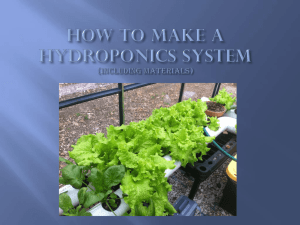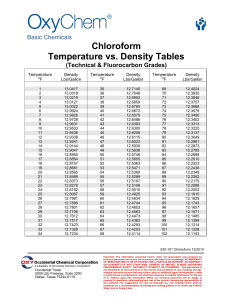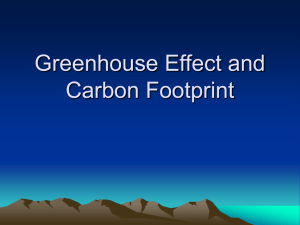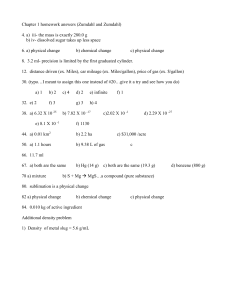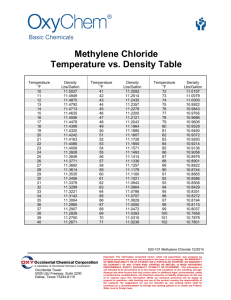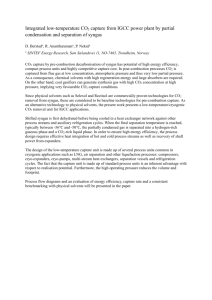Overview - United States Association for Energy Economics
advertisement
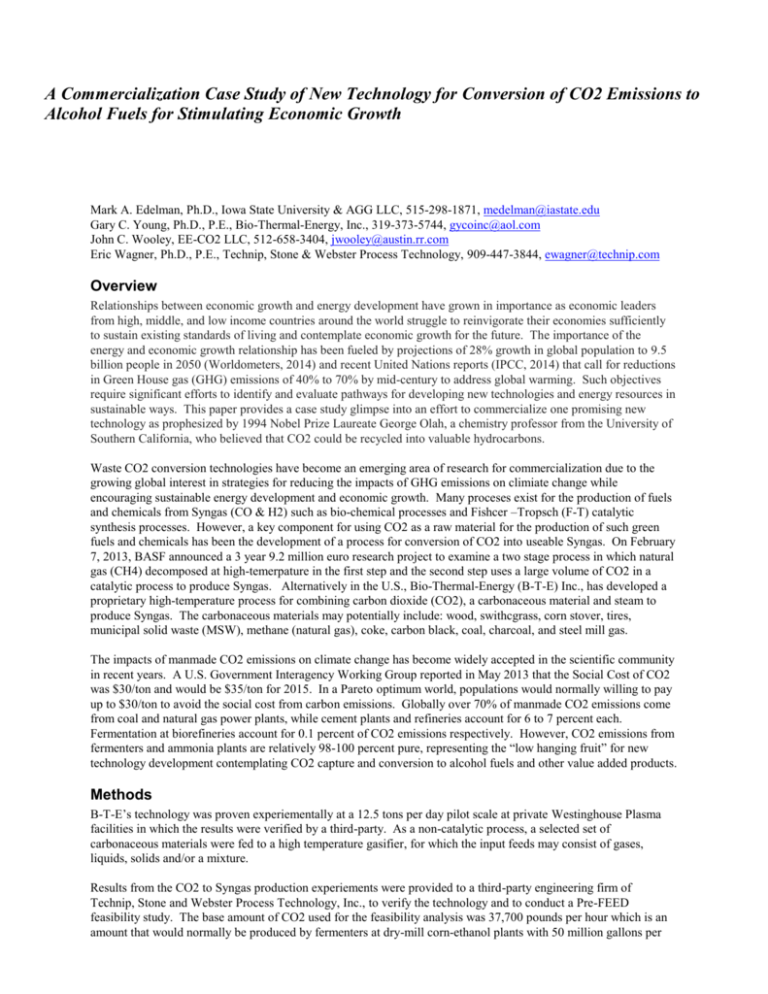
A Commercialization Case Study of New Technology for Conversion of CO2 Emissions to Alcohol Fuels for Stimulating Economic Growth Mark A. Edelman, Ph.D., Iowa State University & AGG LLC, 515-298-1871, medelman@iastate.edu Gary C. Young, Ph.D., P.E., Bio-Thermal-Energy, Inc., 319-373-5744, gycoinc@aol.com John C. Wooley, EE-CO2 LLC, 512-658-3404, jwooley@austin.rr.com Eric Wagner, Ph.D., P.E., Technip, Stone & Webster Process Technology, 909-447-3844, ewagner@technip.com Overview Relationships between economic growth and energy development have grown in importance as economic leaders from high, middle, and low income countries around the world struggle to reinvigorate their economies sufficiently to sustain existing standards of living and contemplate economic growth for the future. The importance of the energy and economic growth relationship has been fueled by projections of 28% growth in global population to 9.5 billion people in 2050 (Worldometers, 2014) and recent United Nations reports (IPCC, 2014) that call for reductions in Green House gas (GHG) emissions of 40% to 70% by mid-century to address global warming. Such objectives require significant efforts to identify and evaluate pathways for developing new technologies and energy resources in sustainable ways. This paper provides a case study glimpse into an effort to commercialize one promising new technology as prophesized by 1994 Nobel Prize Laureate George Olah, a chemistry professor from the University of Southern California, who believed that CO2 could be recycled into valuable hydrocarbons. Waste CO2 conversion technologies have become an emerging area of research for commercialization due to the growing global interest in strategies for reducing the impacts of GHG emissions on climiate change while encouraging sustainable energy development and economic growth. Many proceses exist for the production of fuels and chemicals from Syngas (CO & H2) such as bio-chemical processes and Fishcer –Tropsch (F-T) catalytic synthesis processes. However, a key component for using CO2 as a raw material for the production of such green fuels and chemicals has been the development of a process for conversion of CO2 into useable Syngas. On February 7, 2013, BASF announced a 3 year 9.2 million euro research project to examine a two stage process in which natural gas (CH4) decomposed at high-temerpature in the first step and the second step uses a large volume of CO2 in a catalytic process to produce Syngas. Alternatively in the U.S., Bio-Thermal-Energy (B-T-E) Inc., has developed a proprietary high-temperature process for combining carbon dioxide (CO2), a carbonaceous material and steam to produce Syngas. The carbonaceous materials may potentially include: wood, swithcgrass, corn stover, tires, municipal solid waste (MSW), methane (natural gas), coke, carbon black, coal, charcoal, and steel mill gas. The impacts of manmade CO2 emissions on climate change has become widely accepted in the scientific community in recent years. A U.S. Government Interagency Working Group reported in May 2013 that the Social Cost of CO2 was $30/ton and would be $35/ton for 2015. In a Pareto optimum world, populations would normally willing to pay up to $30/ton to avoid the social cost from carbon emissions. Globally over 70% of manmade CO2 emissions come from coal and natural gas power plants, while cement plants and refineries account for 6 to 7 percent each. Fermentation at biorefineries account for 0.1 percent of CO2 emissions respectively. However, CO2 emissions from fermenters and ammonia plants are relatively 98-100 percent pure, representing the “low hanging fruit” for new technology development contemplating CO2 capture and conversion to alcohol fuels and other value added products. Methods B-T-E’s technology was proven experiementally at a 12.5 tons per day pilot scale at private Westinghouse Plasma facilities in which the results were verified by a third-party. As a non-catalytic process, a selected set of carbonaceous materials were fed to a high temperature gasifier, for which the input feeds may consist of gases, liquids, solids and/or a mixture. Results from the CO2 to Syngas production experiements were provided to a third-party engineering firm of Technip, Stone and Webster Process Technology, Inc., to verify the technology and to conduct a Pre-FEED feasibility study. The base amount of CO2 used for the feasibility analysis was 37,700 pounds per hour which is an amount that would normally be produced by fermenters at dry-mill corn-ethanol plants with 50 million gallons per year capacity. Four combinations of coal and natural gas (NH4) were used to define scenarios of carbonaceous feedstock for feasibility analysis purposes. Additionally, syngas production requires that steam be supplied in amounts to facilitate decomposition in the gasifier. The economic feasiblity of producing methanol, ethanol, and gasoline was evaluated using information gathered from commercial providers of alternative technologies that use syngas to produce various alcholol fuels. This information includes operating costs as well as capital expenditures for the various fuels selected for comparison, including ethanol, methanol, and gasoline. A dozen scenarios involving various combinations of inputs and products were evaluated in the feasibility study. Results The pilot scale B-T-E experiments produced a reduction in CO2 of 67%. The new process appears promising as it was not optimized for efficient use of recovered process heat. Feasiblity study costs included estimates for capital expenditures and operating costs. For methanol production, the estimated manufacturing costs ranged from $0.63 per gallon to $0.92 per gallon. The methanol market price used in the study was $1.90 per gallon for a potential margin ranging from $.98 per gallon to $1.27 per gallon. For ethanol production, the estimated manufacturing costs ranged from $.89 per gallon to $1.53 per gallon produced. The ethanol market price used in the analysis was $1.90 per gallon, thus providing a potential margin ranging from $.37 per gallon to $1.01 per gallon. Finally, the estimated manufacturing costs for gasoline ranged from $1.25 per gallon to $1.58 per gallon. With an assumed market price for gasoline of $2.80 per gallon, the preliminary margin estimates ranged from $1.22 per gallon to $1.55 per gallon. Conclusions Based upon feasibility study findings and preliminary margin calculations, the estimated pre-tax return on investment (ROI) are sufficient moving forward on the next steps in commercialization. Economic feasibility for the B-T-E technology is expected to improve with future process optimization and heat recovery. One potential factor limiting deployment of the B-T-E technology is the capital expenditure required for a commercial pioneer plant. The estimated capital expenditures for the feasilbity study scenarios range from $182 million to $422 million depending on the product produced. This range represents a capital expenditure of $2.08 per gallon of nameplate capacity to $4.39 per gallon of nameplate capacity. For comparison, a template construction project in the corn-ethanol industry is expected to cost approximately $1.60 per gallon of nameplate capacity. However, capital expenditures for some new pioneer cellulosic plants are exceeding $6 per gallon of capacity. Another limiting limiting factor may be the local load capacity for electricity and natural gas. Depending on the product selected, site criteria may be more limited, however, a different product and access to less expensive biomass and carbonaceous inputs may partially offset site specific infrastructure circumstances. In conclusion, the B-T-E Technology represents a promising new technology for reducing CO2 emissions in industrial facilities that have relatively pure CO2 emissions and meet other capacity requirements. The technology is flexible in using inputs, such as natural gas, coal, or biomass. The technology is flexible in producing alternative fuel products such as methanol, ethanol, gasoline, diesel, and other high value products. If co-located with existing biorefineries where waste CO2 streams are currently emitted, there is potential to multiply the biorefinery output, without using more corn. The technology potentially appears to be competitive without production subsidies and represents an opportunity to create a new industry for economic growth in many low, middle, and high-income country circumstances provided that sufficient equity capital can be procured for pioneer commercial operations. References BASF News Release 02.07.2013; P 351/13e “Research Cooperation Develops Innovative Technology for Environmentally Sustainable Syngas Prodution from Carbon Dioxide and Hydrogen. BASF SE Corporate Media Relations, http://www.basf.com . United Nations, International Panel on Climate Change, http://www.ipcc.ch/report/ar5/wg2/ accessed Apr. 14, 2014. Worldometers, http://www.worldometers.info/world-population/ accessed April 14, 2014.
